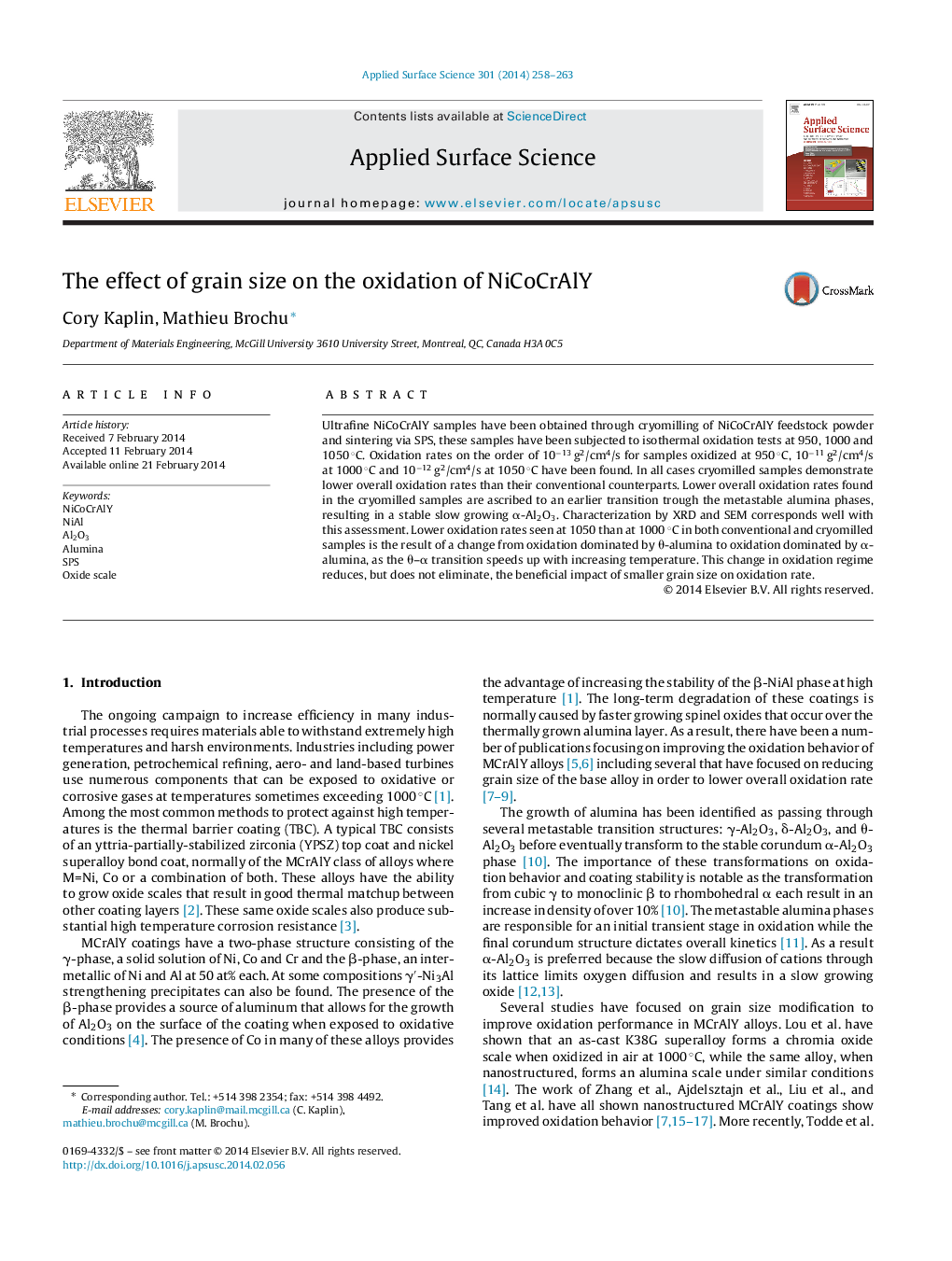| Article ID | Journal | Published Year | Pages | File Type |
|---|---|---|---|---|
| 5350836 | Applied Surface Science | 2014 | 6 Pages |
Abstract
Ultrafine NiCoCrAlY samples have been obtained through cryomilling of NiCoCrAlY feedstock powder and sintering via SPS, these samples have been subjected to isothermal oxidation tests at 950, 1000 and 1050 °C. Oxidation rates on the order of 10â13 g2/cm4/s for samples oxidized at 950 °C, 10â11 g2/cm4/s at 1000 °C and 10â12 g2/cm4/s at 1050 °C have been found. In all cases cryomilled samples demonstrate lower overall oxidation rates than their conventional counterparts. Lower overall oxidation rates found in the cryomilled samples are ascribed to an earlier transition trough the metastable alumina phases, resulting in a stable slow growing α-Al2O3. Characterization by XRD and SEM corresponds well with this assessment. Lower oxidation rates seen at 1050 than at 1000 °C in both conventional and cryomilled samples is the result of a change from oxidation dominated by θ-alumina to oxidation dominated by α-alumina, as the θ-α transition speeds up with increasing temperature. This change in oxidation regime reduces, but does not eliminate, the beneficial impact of smaller grain size on oxidation rate.
Related Topics
Physical Sciences and Engineering
Chemistry
Physical and Theoretical Chemistry
Authors
Cory Kaplin, Mathieu Brochu,
